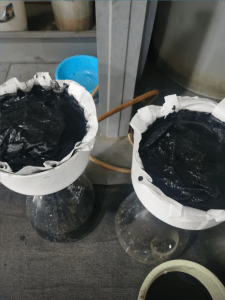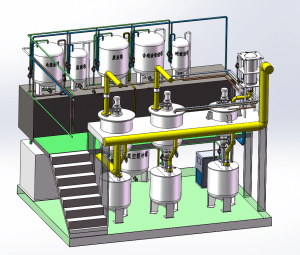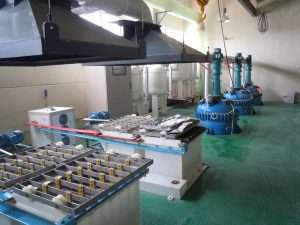Call us now:
Waste palladium carbon catalyst fractionation and extraction recovery method: This type of method mostly belongs to the catalyst separation in the catalytic reaction system, re-activation and return to reuse. Such as.
①Extraction separation of organic matter. The tar containing rhodium catalyst was extracted and separated from the tar by adding equal amounts of dichloromethane and ammonia, shaking vigorously for 30s and stratifying after standing for 10 min, with the rhodium remaining in the aqueous phase. Repeat the extraction 2 times, the rhodium recovery can reach 98% .
②With polar organic matter. Carboxylic acid + alkyl halide, or 2-methylglutaric acid + nonanoic acid + water mixture after the extraction of rhodium-free organic matter, so that rhodium in the form of phosphine, carbonyl complexes recycled to the carbonylation reactor reuse .
(iii) H2 formylation of Rh-containing waste catalyst. After removing the aldehyde and olefin compounds, the high boiling point Rh-containing organics are placed in water and oxidized by air, then mixed with toluene and added with C2~Cg carboxylic acid, and the organic phase of Rh extracted from toluene is recovered and reused by passing CO reduction in the autoclave.
(4) Rh-TPP waste catalyst for the synthesis of aldehyde by carbonization of propylene + CO + H2, containing 48% free triarylphosphine and 20% light organic matter. Flash evaporation under vacuum at 243°C and 0.27 KPa pressure. The distillate was cooled and crystallized out to contain 90% triphenylphosphine crystals returning to the hydrogenation plus acylation reaction. The germanium catalyst was recovered from the flash residue in 10% yield for reuse;
⑤ For the solution containing HhCO)PPh3)3 catalyst after splitting and skimming, it is diluted with toluene or xylene and then used with siloxane as the backbone. The ion exchange resin containing aromatic sulfonic acid ( SO3H or -SO3--HPR3+ ) or according to the acid group adsorbed at room temperature, Rh adsorption rate of 95%, eluted from the resin with dilute HCl to (TPP)nRh(I))Cl. Then add pyridine, hydrazine and ET3N, re-hydrogenated with H2, CO or sodium borohydride to (TPP). Rh(1)H returned for reuse.
(6) The carbonylation reaction of methanol, methyl acetate, and dialdehyde uses catalysts containing Rh, I, and produces a Rh-containing tar. The tar and iodomethane enter the organic phase, and [RhI4(CO)2]- is converted to [RhI5CO]2- enters the aqueous phase, which is returned to the carbonylation for reuse.


